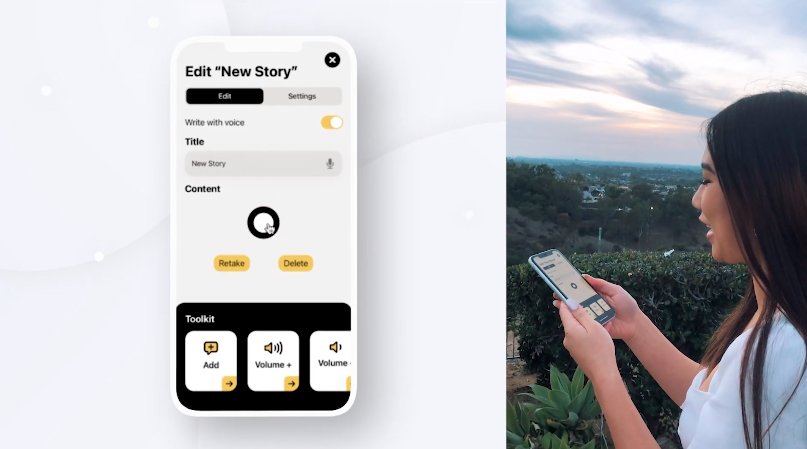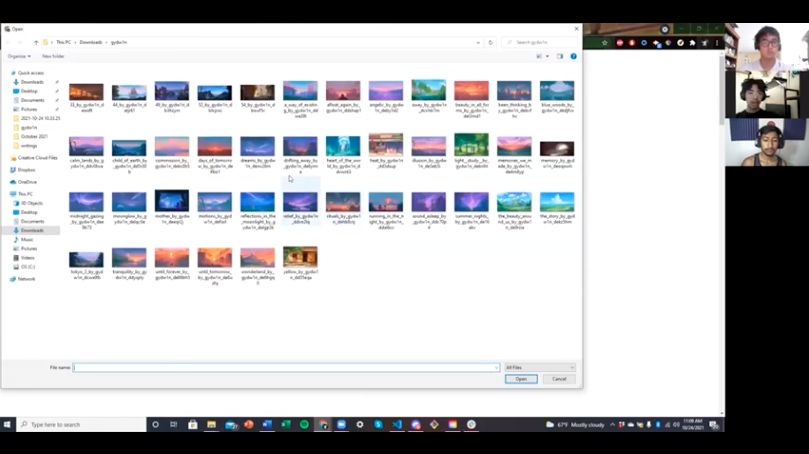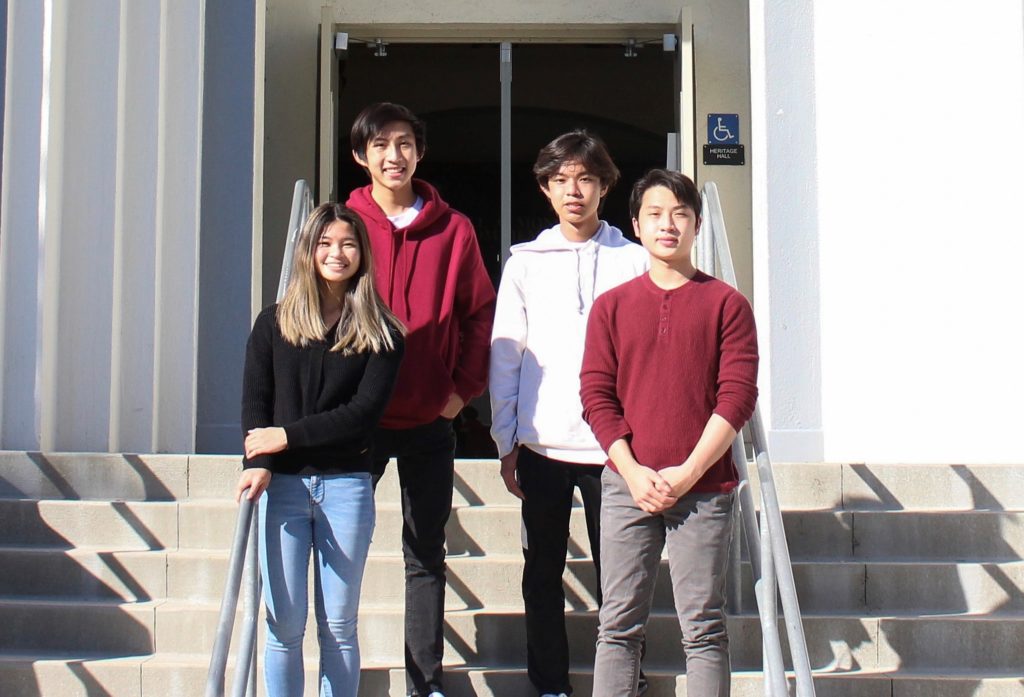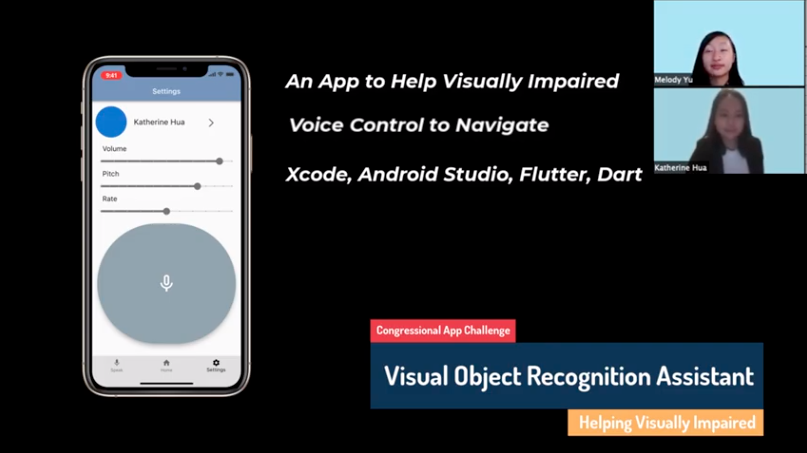One smartphone app is designed to assist people who are visually impaired with object recognition technology, made possible by artificial intelligence. Another app is similar to social media but allows users to share progress toward personal goals, along with helpful tips.
There’s also an app for tracking volunteers, one for recycling or repurposing used cell phones, one for sharing accessible spoken-word stories, and a one-stop app for health care.
And they were all created by students in Orange County.

This year, more than a dozen local high schoolers earned honors in the 2021 Congressional App Challenge, which is a series of regional app-development competitions hosted by members of U.S. Congress.
From 340 congressional districts in 50 states, nearly 7,200 middle and high school students submitted entries, resulting in 2,101 fully functioning apps.
Here’s a look at the winning apps from Orange County’s congressional districts, with a little background from their student-creators:
AURA by Diya Sreedhar from Troy High School
Rep. Young Kim | 39th Congressional District
“Recently, a very close relative of ours passed away suddenly due to an aggressive brain tumor. My family and I were shocked, and we didn’t know how to handle his end-of-life care. We weren’t sure how long our relative would survive, or how severe his disease progression would be. When my family members were looking for this information, there was no single source we could turn to. I designed my app to bring together all the necessary information in one place. I believe many families go through this same scenario, and I hope my app will bring some clarity to this very sensitive but important topic.
“My ultimate goal for this app is to provide the community with direct and immediate access to their health care analysis, enabling them to plan their medical future. Without having to go through expensive hospital software and legal gateways, patients can be diagnosed and offered treatment from a convenient mobile app. This software is also a second opinion to the doctor’s initial analysis, reducing the risk of misdiagnosis and making advice for medical treatment extremely easy to access.”
MeGlz by Kevin Sohn of Northwood High School, Issacc Chavez and Gabriel Sianez of Dominguez High School
Rep. Nanette Barragan | 44th Congressional District
“Quarantine exposed the need for a community. The soccer practices, the band rehearsals, the lunchtime club meetings, all of these daily and seemingly dull meetings were the birthing grounds of our passions. It was in those meetings that we began our journeys, where we learned how to do a basic drill or hold a drumstick in a certain way. We could take baby steps without shame because all of us were taking baby steps together, slowly progressing towards attaining our respective goals. And not just slowly, but consistently.

“With quarantine, those daily communal meetings were taken away, replaced with the facade of social media. Social media, for all of its benefits, can sometimes be depressing to look at. It’s filled with supermodels and impossibilities, with monumental goals already achieved and posing for the camera. There is little sincerity, none of the authenticity needed for someone looking to improve themselves.
“We created MeGlz because we wanted to create an environment where everything was a work in progress. It wouldn’t be about taking a photo at the top of a mountain, but making a checkmark in your notebook on the way up. The inspiration was people sharing their baby steps, their small and infinitely important achievements, with a community that would unashamedly take those baby steps with them.”
Voluntime by Aryan Mittal from San Joaquin High School
Rep. Katie Porter | 45th Congressional District
“I was inspired to create this app when the presidents of some school clubs reached out to me to ask how they should be tracking their volunteers. A detailed log of all volunteer hours is important because students can submit their logs to the school at the end of the year for recognition on their transcripts. I looked around and realized that most clubs and nonprofits were using a convoluted mess of forms, spreadsheets, and email chains to manage their volunteers. These complex logistics were a setback for overwhelmed students trying to start their own clubs, and I recognized that this problem could be solved through software. So, I got to work building Voluntime.”
Realms by Eric Ly, Justin Pham, Derek Nguyen and Joanne Tran of Garden Grove High School
Rep. Jose “Lou” Correa | 46th Congressional District

“Our team’s inspiration to create the app was to make an app that would provide real value to our community. Seeing as how our immigrant parents have routine issues with access to vital healthcare information and resources, we wanted to create a healthcare platform that would work for all citizens.
“Eventually, we hope to expand Realms: Health to other nations to create a world-wide access to healthcare information and resources. And in the future, our team hopes to expand the Realms: ecosystem that would address issues such as food waste and political voicelessness.”
$ellPhone by Joshua Lou from Oxford Academy
Rep. Alan Lowenthal | 47th Congressional District
“The long-awaited Tokyo 2020 Olympics finally arrived this past summer. For the first time in Olympic history, all 5,000 Tokyo Olympic medals were made out of recycled e-waste, especially obsolete cell phones. This inspired me to raise public awareness and provide an innovative solution to reuse, recycle, and repurpose used cell phones by creating this mobile app.
“E-waste has become the world’s fastest-growing waste stream with a record 54 million metric tons of e-waste generated worldwide in 2019. However, it is the most neglected form of waste. A whopping 97% of Americans own at least one cell phone, but only 15% of these phones are collected for reuse and recycling. When people, including myself, look into their drawers or storage rooms, they will probably see many used phones just laying around and collecting dust. The Environmental Protection Agency (EPA) estimates that one billion used mobile phones are stockpiled in U.S. households, resulting in a great loss of valuable materials such as gold and silver. On the other hand, many old phones are discarded in the trash, ending up in landfills and causing serious damage to our health and environment.
“Compelled by the pressing issue, I conducted a thorough literature review of over 30 peer-reviewed research articles to understand the psychological and social determinants of consumers’ behaviors for phone recycling and research recommendations on intervention strategies. There are three root causes for the extremely low collection rate of cell phones. First, many people are unaware of the resource sustainability and environmental and health safety issues with used phones. Secondly, even with certain environmental awareness, they do not know where and how to recycle and repurpose their old phones. Thirdly, the “inconvenience” and time and effort costs of recycling kept many cell phone owners from taking action.
“Inspired by research-informed intervention strategies, I felt that I could create an app to use technology to implement these strategies, not only engaging people to learn more about the why and how-tos of phone recycling, but also devising a practical and convenient solution that people could find personally beneficial.”
VORA by Katherine Hua from Woodbridge High School and Melody Yu from Sage Hill School
Rep. Michelle Steel | Congressional 48th District
“As Generation Z kids born into the age of electronic devices and the Internet, my partner and I have used computers for as long as we could remember. Having been acquainted with the fascinating novelty of electronic devices since an early age, we developed an enduring interest in the computer field. As we grew older, we picked up coding basics and began learning languages such as Scratch, Python, etc. In an overlap with our academics, we shared several interests and a liking for STEM, especially programming. This passion motivated us to pursue learning about computer science and programming, and exploring fields like AI, Python, Javascript, and more.
“Until recently, we couldn’t imagine a way to utilize our curiosity and skills to contribute to the people in our community. Then, my teammate’s grandfather began losing his vision from age-related macular degeneration and started to struggle with daily life. Learning about his condition and observing how a person can suffer from vision impairment emotionally and physically sparked our interest in sensory augmentation devices. Upon researching for a visual aid to compensate for his loss of vision, we realized that most available aids were limited to walking sticks and guide dogs despite modern advancements in medical technology. The tech gap between current options and existing technological advancements was shocking, but it inspired us to create an app as an alternative solution.

“After researching more about pre-existing electronic aids and prototypes, and exploring more of computer science, we came across the concept of object recognition using Computer Vision. Computer Vision is a field of artificial intelligence that uses advanced, complex image processing algorithms to help computers understand images, mimicking the human visual system.
“During the planning and beginning stages of our project, we discovered Tensorflow, an open-source library developed by Google for machine learning and artificial intelligence. Object detection models trained by Tensorflow helped give us the inspiration to build a mobile app that can recognize what kinds of objects are in their proximity and warn users through speech feedback.
“This journey was how we were inspired to develop this app for the Congressional App Challenge. Along the way, we picked up insights from many different experiences and ideas as we explored modern hardware and software. We hope that our app VORA can make use of our programming insights to help the visually impaired increase their safety, independence, and quality of life.”
VAST (Voice Accessible Story Technology) by Tina Mai from St. Margaret’s Episcopal School
Rep. Mike Levin | 49th Congressional District
“As a writer, I found it unjust that traditional writing methods hinder so many children from creativity and expression. After doing additional research, I found that pre-existing and competing products are too expensive, complicated, hard to find, or not designed as a simple tool for kids. This inspired me to create my own solution from both a writer’s and a young person’s perspective. I hope to combine my passion for literature and computer science to create a novel approach to creative writing for kids, in a way that addresses the inequalities in accessibility and provides opportunities to groups, such as those with visual and learning disabilities, that are often left out when it comes to tech products.
“I initially wanted to make a tactile device following the same purpose, but decided that a voice-based app would be more accessible, affordable, and scalable. This way low-income families and under-resourced communities can access it, and it’s something that can easily reach different corners of the world. This is important to me because I used to volunteer for children in countries overseas, and I don’t want distance to be an obstacle that prevents them from using this tool.
“My vision for the app is for it to be a collaboration, with every child and every voice on the platform as a puzzle piece to inclusivity, working together to create a network of stories and to build this environment where everyone’s stories matter and inspire.”
The Congressional App Challenge is an official U.S. House of Representatives initiative that encourages students to learn coding as a step toward pursuing careers in computer science.
Participating Congress members select the winning apps from their districts, and the students who created them get to showcase their innovations during an annual #HouseOfCode celebration.
The program is billed as a public-private partnership made possible with funding from a number of sponsors, including Omidyar Network, AWS, theCoderSchool, Facebook, Replit and Accenture.
Eligible students can already pre-register for the next Congressional App Challenge, which is expected to launch in June.
For more information, visit www.congressionalappchallenge.us.
